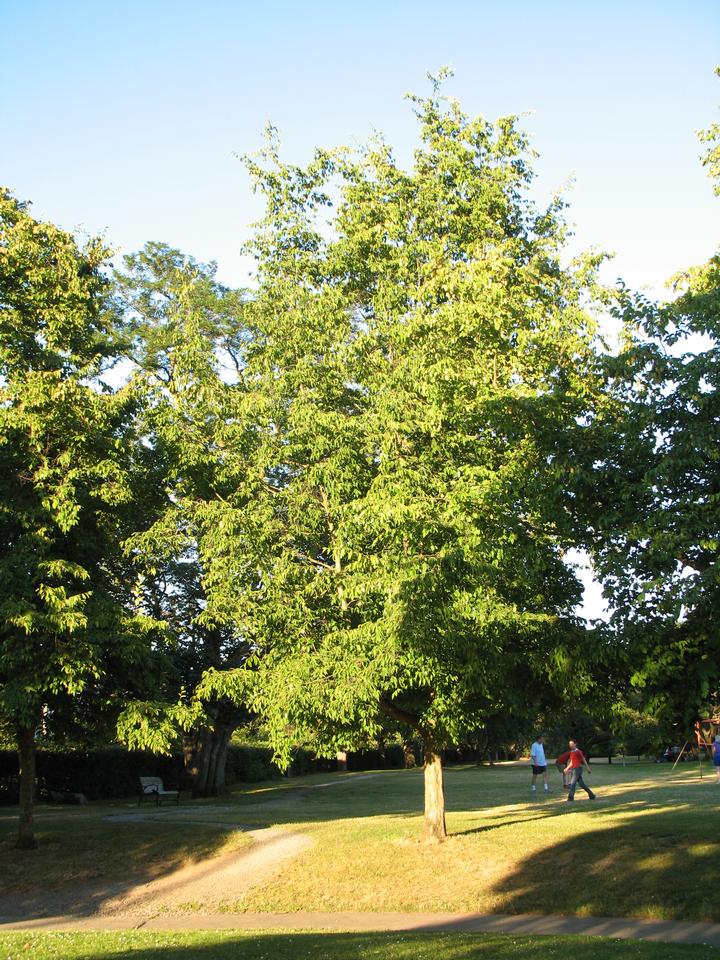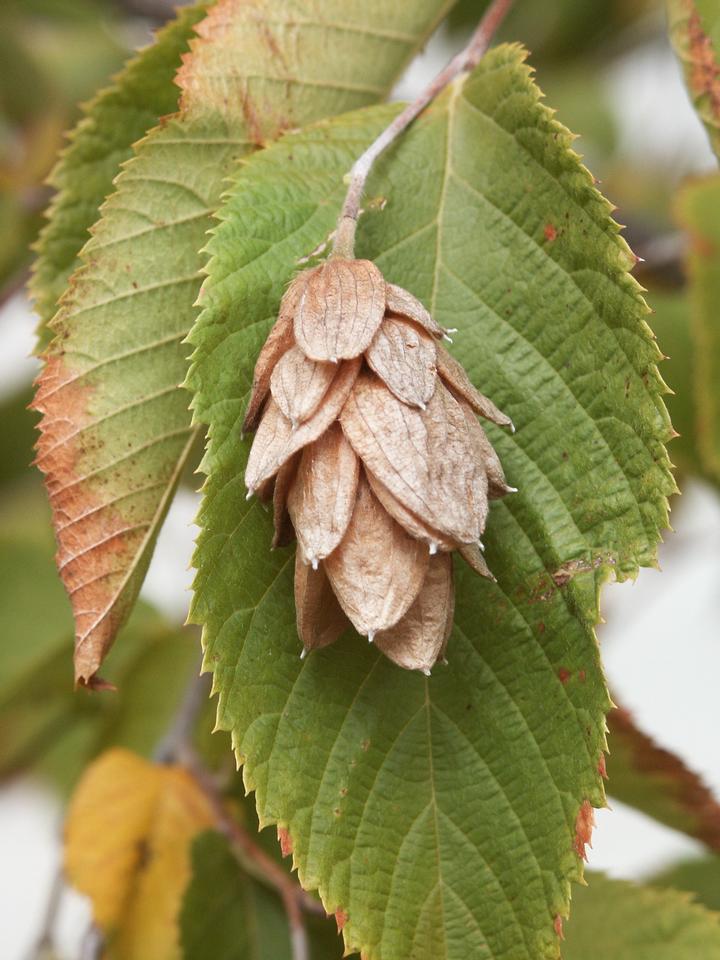Hophornbeam, Eastern, or Ironwood
Ostrya virginiana
Betulaceae - Birch
Description
Leaves: Dark green or dark yellowish-green and rather rough above, fall color dull or clear yellow; similar color and hairier below with pale veins showing contrast with the leaf; hairy above between veins and on midrib; alternate; simple; oval to lance-shaped, 3" to 5" in length, narrow, tapering to a point; round to heart-shaped; doubly and sharply toothed, each vein ends in a tooth, some veins are forking near the end; deciduous.
Twigs/buds: Twigs reddish-brown, hairless and shiny; very slender (thinner than buds), zig-zag. Buds green-brown, hairless to slightly hair covered; 1/8" to 1/4" in length, egg-shaped, pointy; somewhat gummy; divergent; lack terminal buds; scales striped lengthwise; overlapping.
Flowers/fruit: Flowers monoecious; male and female flowers held in catkins; male catkins (pollen flowers) yellow-brown, 1" long, can be seen during winter in dangling groups of 3's; female catkins inconspicuous, slender, delicate, in clusters near tip of branch; occur in April. Fruit is a small nutlet found within a papery bladder; bladders hung as a cluster or infructescence from an axis attached to twig tips, superficially resembling the fruit of hops; infructescence is 1-1/2" to 2-1/2" long; hairy (sticky); seeds ripen by fall, then detach and drop.
Bark: Gray-brown; smooth when young; more mature bark brown, scaly, often in narrow, loose, verticle strips; shaggier bark than O. knowltonii.
Wood: Moderate importance; light brown; hard, heavy or dense, tough or strong (hence, the sometimes-used common name 'ironwood'); close-grained; diffuse-porous; used to make tool handles.
General: A native to most of the eastern U.S. Naturally common in the understory, this small to medium-sized tree can reach heights from 25' to 40'. Canopy narrow with slender, wide-spreading branches. Does well in dry, yet fertile soils. Moderate shade tolerance.
Landscape Use: Easier to obtain than O. knowltonii and it makes a nice, medium-sized shade tree. Has done well in urban plantings. Use for lawns, golf courses, parks, naturalized areas, and possibly near streets. It differs from O. knowltonii in having leaves that are 3" to 5" long with 11-15 pairs of veins. The 'hop' part of the name comes from the fact that its fruit superficially resembles the fruit of hops. Zones 3-9.
Characteristics
General
| Family | Betulaceae - Birch |
|---|---|
| Cultivar Availability | No |
| Hardiness Zone | 3-9 |
| Type | Broadleaf |
| Utah Native | No |
Growth
| Growth Rate | Low |
|---|---|
| Mature Height | Medium |
| Longevity | High |
| Is Good Under Power Lines | No |
| Crown Shapes | Irregular |
Ornamental
| Bark | No |
|---|---|
| Fall Color | No |
| Flowers | Yes |
| Foliage | Yes |
| Fruit | Yes |
Tolerance
| Shade | High |
|---|---|
| Salt | Medium |
| Drought | Medium |
| Poor Drainage | Low |
| Alkalinity | High |
| Transplanting | Medium |







